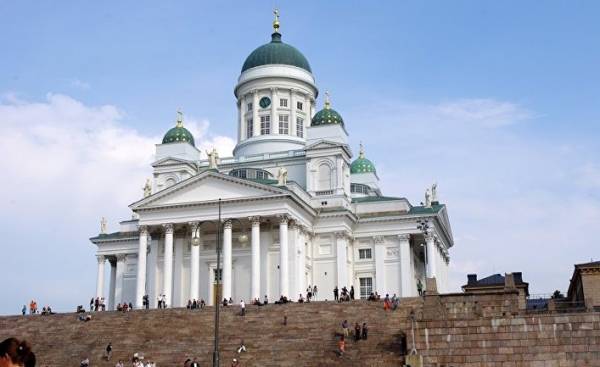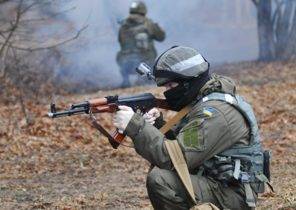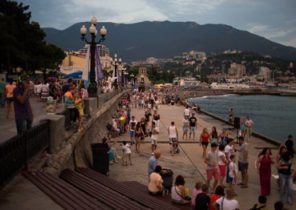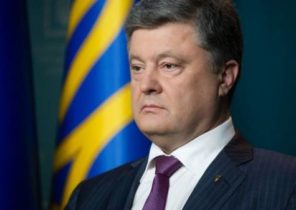
Any country prefers to remember the successful turning points in its history. But what went wrong? The book “land of a thousand mistakes” offers an alternative view on the history of Finland.
In the history of Finland, as indeed of every country, there are things you prefer to forget or sweep them under the carpet. The most interesting errors collected Weight Sisate in his book “land of a thousand errors — the Story of Finland in the slips” (Tuhansien mokien maa — Tunaroinnin Suomen historia).
For example, the Swedish king Gustav Vasa in 1550 founded Helsinki in a totally appropriate place, and, in particular, for this reason, in the Finnish capital, there is no such picturesque old town, in Tallinn or Stockholm.
Initially, Gustav Vasa, ordered all the burghers of Porvoo, Rauma, Ulvila and Tammisaari to move to a new city, which was founded at the mouth of the river Vantaanjoki in the area Vanhakaupunki that in the heart of Helsinki, between the districts Koskela and Viikki. New city founded on the Eastern trade routes, was to surpass located on the other side of the Gulf of Finland Reval, now Tallinn.
However, after 11 years Sweden conquered Tallinn and the Royal interest in Helsinki is gone.
The city has tried to develop, but unsuitable for large ships, the port was a serious problem.
In 1640-ies it was decided to move to Helsinki. But where? First, the new centre was to become the current kalasatama district, but the surrounding land belonged to the nobility, and the city would have nowhere to expand. Eventually, the city decided to move in Vironniemi, in the present kruununhaka district of. The townspeople were against the move several miles South, but no one dared to oppose the will of the king.
However, even this drastic step did not revive a dull city. Helsinki began to develop rapidly only after 1748 began construction sweaborg, that is, fortress of Suomenlinna.
The only thing left from the original Helsinki is the Foundation of the Church in the area Vanhakaupunki.
Errors in the times of the Grand Duchy of Finland
What blunders were committed in the period when Finland was part of Russian Empire?
One of the funniest mistakes led to the fact that the home of Moomin world has become what we know it today.
After Finland became part of the Russian Empire, the ships quickly began to develop. One of the main problems was the fact that the sea in the archipelago of Helsinki was small and therefore dangerous for ships. It was necessary to build a new lighthouse.
The chief pilot’s office Per Gustaf Brad proposed to build a lighthouse on the islet of Glasholm. The Russian Director of the lighthouses of the Gulf of Finland Leontiy Spafari, however, stated that this plan is insane, because the island was too close to the coast, and the lighthouse helped the sailors navigate in the archipelago.
Nicholas I, however, listened to the opinion of Brodda, and after a long and costly construction process in September 1835, the lighthouse light came on. Once it became clear that the lighthouse is in the wrong place and can even pose a danger to ships. After 30 years the lighthouse was extinguished, its upper part was dismantled and built a high roof in the shape of a cone.
Converted lighthouse fell in love with the girl, a family cottage which was near the island of Glasholm. Lighthouse in the imagination of Tove Jansson turned into a round house Moomin world.
The history of the lighthouse ended before was published the first book about the Moomins “the Little trolls and the great flood” (Muumit ja suuri tuhotulva, 1945). During Winter war Finnish army had noticed that the Russian bombers using unusual building as a landmark on the way to Helsinki.
The Finnish authorities blew up the building on March 14, 1940. This, however, was too late. The winter war ended one day earlier, but the decree on the abolition of the explosion did not reach on time to the right person.
The railroad, built on the bones
In the autumn of 1867, the Finns were starving. The period from 1866 to 1868 known as the great hunger.
Finance Minister Johan Vilhelm Snellman tried to reform the country and to the last did not want to take additional debt from abroad for the purchase of cereals. In addition, he opposed the gratuitous distribution of food to the poor. The government tried to teach the people, in particular, to make bread from moss, but this idea has not gained great popularity.
Mass starvation has worsened, and Snellman had to agree to purchase cereals in debt and an emergency public works. The Minister opposed such projects because they believed that they contribute to vagrancy hungry.
The largest such project was the construction of the railway between Riihimaki and St. Petersburg, which was taken foreign debt.
The construction of the road was a disaster. People after a long fast was too weak to do heavy physical work. Approximately every fifth worker died during construction. As the saying goes, this railroad was built on the bones because the dead were buried directly in the canvas construction of the road way.
The peak of mass starvation occurred in the spring of 1868. The number of deaths has increased steadily. If in January died of starvation about 8 thousand people, in may for 25 thousand. In total, 1867-1868 died about 8% of the population of Finland. This famine was the last mass starvation in Europe in peacetime. If the government then acted in another way, it is possible that the disaster could have been avoided.
Finnish Manifesto is not interested in Nicholas II
Writes Sisate, the first 80 years under the Russian rule, Finns live well. However, at the end of the 19th century began the Russification of Finland. The February Manifesto of 1899, which established the right of the Emperor to issue laws without the consent of the government of Finland, caused an uproar among the people.
For example, in protest, Finn began to dress in black, and it came even to the fact that women in bright clothes were mistaken for foreigners.
Fast — in just 11 days — Finns collected 520 thousand signatures under the petition with a request to cancel the manifest. It was not an easy task in a country whose population was only 2.5 million people.
The delegation, consisting of 500 of the Finns, went to St. Petersburg, hoping to present the petition to Nicholas II. Within a few days the Finns were walking around the city, admiring the sights and waited for news from the Emperor. Unfortunately, Nicholas II found it necessary to take into account the appeal of the Finnish subjects, and did not accept the delegation.
The Finns blamed for the failure of the plan of the Secretary of state Victor Procope, which was the connecting link between the Finns and Russians. If he was more active, he might be able to arrange a meeting with the Emperor. And in most of the delegations had problems. In St. Petersburg she was not specific, active leader who could promote the objectives of the Finnish government.
But the Emperor himself has behaved unreasonably. He had a good chance to win over the Finns. The Finns, who were lucky enough to catch a glimpse of the Emperor, was fascinated by them. If Nicholas II received the delegation and said that he would think about the details of the manifest, among the Finnish people quickly spread the opinion about the heart and good ruler. This time was exactly the opposite.







